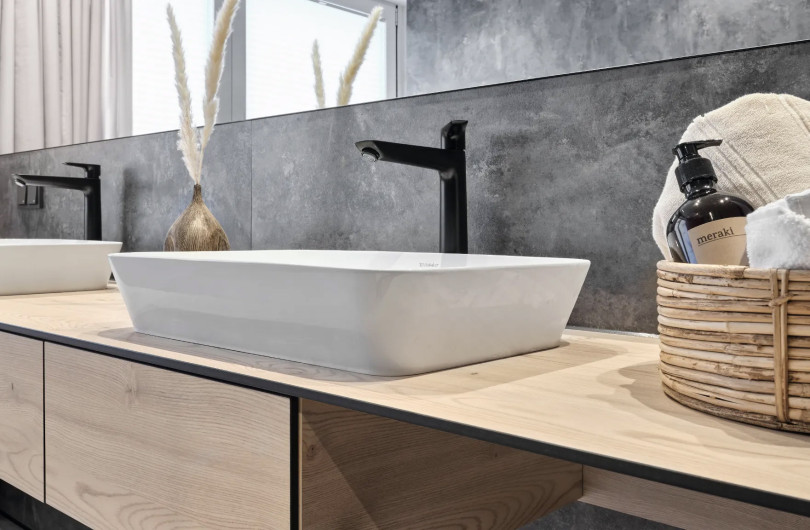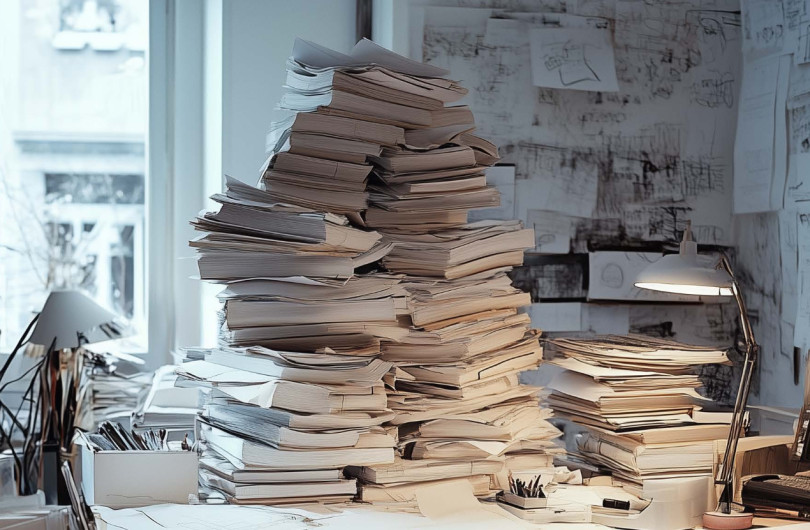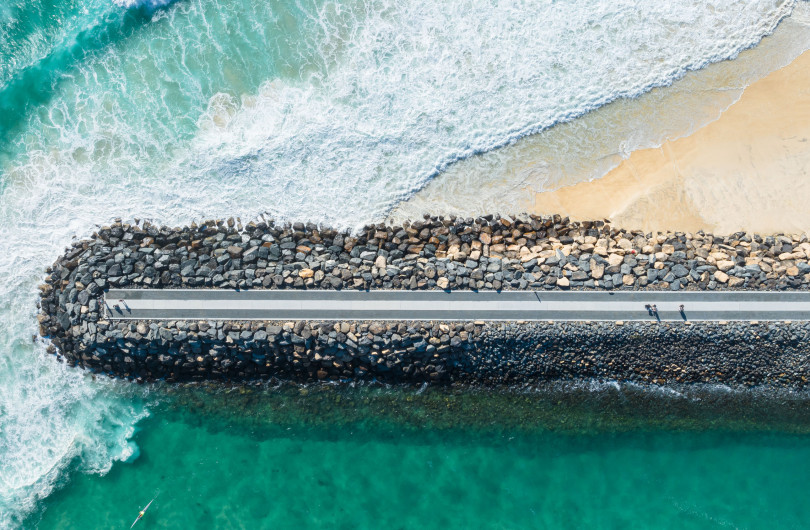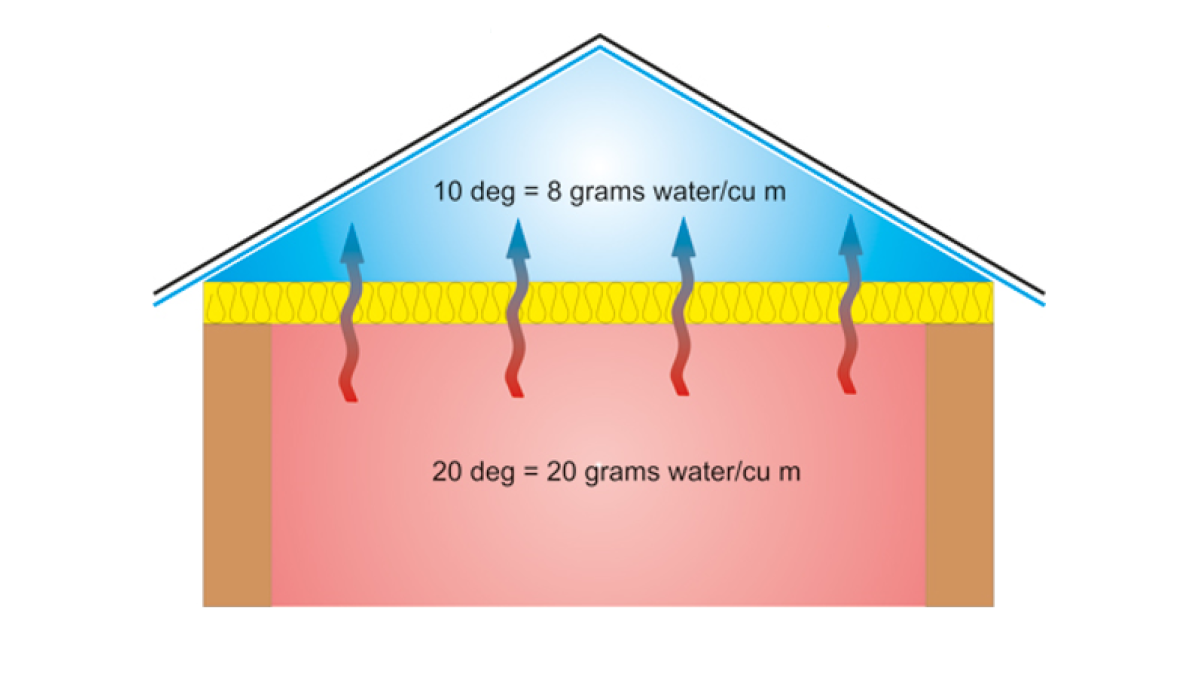
Some overseas countries have a minimum ceiling space ventilation requirement of 1:300 (ratio of ventilation open area to insulated ceiling area). NZ does not have such a statutory requirement, but the Metal Roofing Code of Practice requires roof space ventilation for high-risk designs including low pitched roofs and skillion roofs.
The new H1 regulations will make this even more critical; increasing ceiling insulation will take up ceiling space, meaning less air, and that air will be cooler.
Human activities in a home contribute about three litres of water per person a day into the atmosphere. As water vapour is lighter than air, a lot of this finds its way into the ceiling cavity. The ability of air to hold water in vapour form is dependent on temperature, when relative humidity drops below dew point, condensation forms (see image 2 above).
If more vapour gets into the ceiling space than escapes, serious problems can result that affect both the structural integrity of the building and the health of the inhabitants (see image 3 above).
The general rule of ventilation is, let it in at the bottom, out of the top, and allow free passage of air in between. Cross ventilation can also be used, but is not as effective.
The traditional ways of achieving ventilation are:
- Having eaves and apex vents, and keeping the insulation below the purlins
- Having eaves and apex vents, and vented battens above the purlins
Increasingly, designers are achieving ventilation by using COLORSTEEL Dridex. An innovative roofing solution that delivers superior condensation absorption and enhanced ventilation, Dridex helps to create warmer, drier and healthier New Zealand homes. It has an absorbent fleece adhered to the profile, that works in the same way as conventional underlay, absorbing moisture when humidity reaches dew point, and releasing it when ambient temperatures improve.
By eliminating the need for a separate underlay, every crest of the Dridex roofing effectively becomes a ventilation pathway, and the insulation can be installed within 20mm of the roof itself.
Tests by BRANZ on a straight gable roof showed that this system approximately doubled the ventilation of a roof compared to using conventional underlay, at all pressures (wind speeds). This easily exceeded the 1:300 minimum benchmark.
An additional benefit is that productivity is improved — the roof can be installed faster, and in a greater range of weather conditions.
Taking labour savings into account, costs are comparative to a conventional roof using synthetic paper and netting, without additional ventilation. Dridex also works to help reduce mould and other pollutants associated with asthma, respiratory tract inflammations and allergies. That's why it is Sensitive Choice approved by the National Asthma Council.













 Product News
Product News

















 Popular Products from COLORSTEEL
Popular Products from COLORSTEEL


 Most Popular
Most Popular


 Popular Blog Posts
Popular Blog Posts
